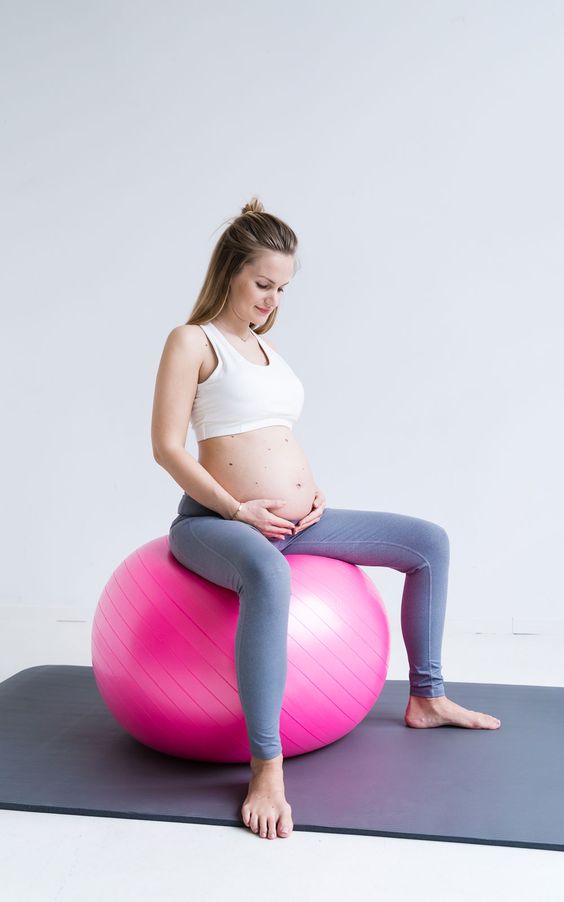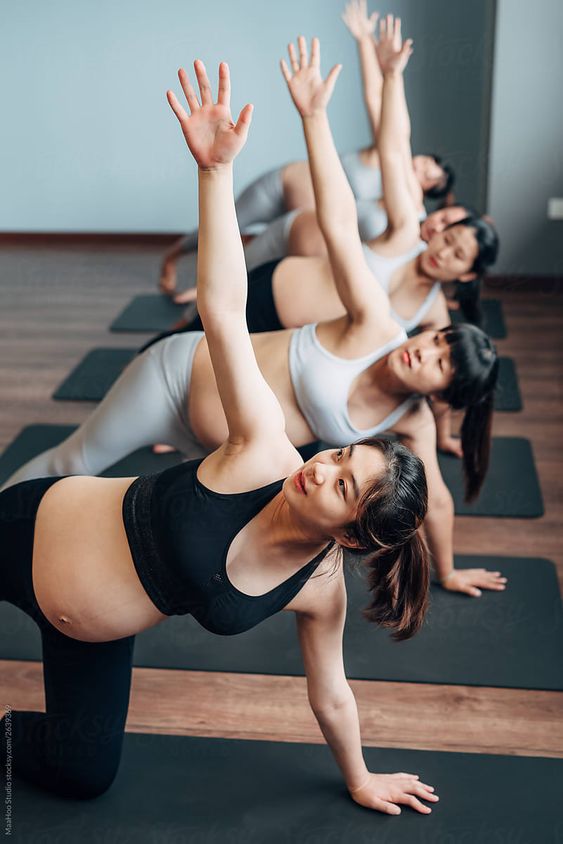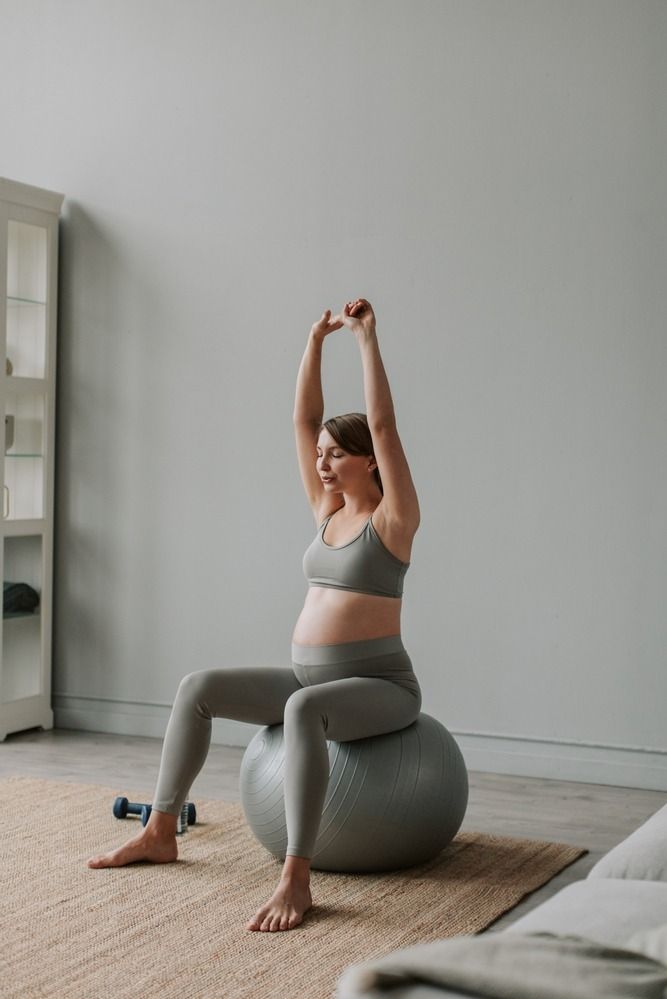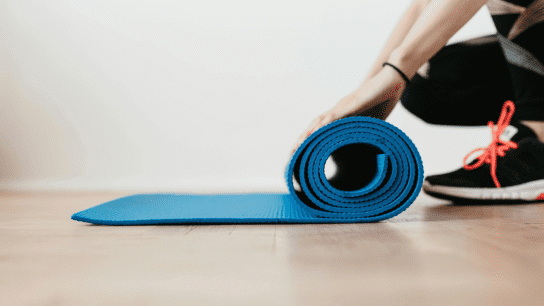Pregnancy is a transformative experience, marked by physical changes, emotional shifts, and the anticipation of welcoming a new life. As expectant mothers navigate this journey, incorporating yoga into their daily routine can offer numerous benefits. Pregnancy yoga is designed to support the body and mind through these changes, promoting overall well-being and preparing for childbirth. This comprehensive guide will explore the benefits of pregnancy yoga, highlight key poses, and provide practical tips for a safe and effective practice.

Understanding Pregnancy Yoga
Pregnancy yoga is a specialized form of yoga tailored to the needs of expectant mothers. Unlike traditional yoga, which may include poses that are not suitable for pregnant women, pregnancy yoga focuses on gentle movements and stretches that accommodate the body’s changing needs. The practice emphasizes safety, relaxation, and strength, helping to prepare for the physical demands of childbirth.
Benefits of Pregnancy Yoga
1. Relieves Common Pregnancy Discomforts
Pregnancy can bring about a range of physical discomforts, including back pain, leg cramps, and hip tightness. Pregnancy yoga helps alleviate these issues through gentle stretching and strengthening exercises. For example, poses like Cat-Cow and Child’s Pose can ease back pain and improve spinal flexibility.
2. Enhances Flexibility and Strength
Maintaining flexibility and strength is crucial during pregnancy. Yoga poses can help prepare the body for labor by strengthening muscles and improving flexibility. Poses such as Warrior II and Butterfly Pose can open the hips and strengthen the legs, which can be beneficial during childbirth.
3. Supports Emotional Well-being
Yoga encourages mindfulness and relaxation, helping to manage stress and anxiety. Techniques such as deep breathing and meditation can foster a calm and balanced emotional state.
4. Improves Sleep Quality
Many pregnant women struggle with sleep disturbances. Yoga can help improve sleep quality by promoting relaxation and reducing anxiety. Gentle evening yoga routines that include stretching and deep breathing can prepare the body for restful sleep.
5. Facilitates Better Breathing
Effective breathing is essential for both the mother and the baby. Yoga teaches breathing techniques that can help manage labor pains and provide better oxygenation to the baby. Techniques such as diaphragmatic breathing and pranayama can be particularly beneficial.
6. Encourages a Positive Birth Experience
Practicing yoga can cultivate a positive mindset towards childbirth. Yoga helps build mental resilience and confidence, which can lead to a more empowering and positive birth experience. Techniques learned in yoga can also be applied during labor to manage pain and stress.
Essential Pregnancy Yoga Poses

Before starting any yoga practice, it’s important to consult with your healthcare provider. The following poses are generally considered safe and beneficial during pregnancy.
1. Cat-Cow Pose (Marjaryasana-Bitilasana)
Benefits: Relieves back pain, improves spinal flexibility.
How to Do It:
- Begin on your hands and knees with wrists aligned under shoulders and knees under hips.
- Inhale, arch your back, lifting your tailbone and chest towards the ceiling (Cow Pose).
- Exhale, round your back, drawing your chin to your chest and tucking your pelvis (Cat Pose).
- Repeat for several breaths, moving slowly and gently.
2. Child’s Pose (Balasana)
Benefits: Provides relief for the lower back and hips, promotes relaxation.
How to Do It:
- Start on your hands and knees, then sit back on your heels, extending your arms forward and lowering your forehead to the mat.
- Breathe deeply and hold the pose for several breaths.
3. Butterfly Pose (Baddha Konasana)
Benefits: Opens the hips, stretches the inner thighs.
How to Do It:
- Sit with your legs extended in front of you, then bring the soles of your feet together and allow your knees to fall out to the sides.
- Gently press your knees towards the floor and hold the pose for several breaths.
4. Warrior II Pose (Virabhadrasana II)
Benefits: Strengthens the legs, improves balance.
How to Do It:
- Stand with your legs wide apart, turning your right foot out and left foot slightly in.
- Bend your right knee, keeping it over your ankle, and extend your arms out to the sides, palms facing down.
- Gaze over your right hand and hold for several breaths before switching sides.
5. Standing Forward Bend (Uttanasana)
Benefits: Stretches the hamstrings, relieves tension in the back.
How to Do It:
- Stand with your feet hip-width apart and slowly bend forward from the hips.
- Allow your head and arms to hang towards the floor. You can bend your knees slightly if needed.
- Breathe deeply and hold the pose for several breaths. Click
Tips for a Safe Pregnancy Yoga Practice

1. Consult with Your Healthcare Provider
Before beginning any new exercise routine, including yoga, it’s important to consult with your healthcare provider. They can provide guidance based on your individual health needs and any potential complications.
2. Listen to Your Body
Pregnancy yoga should be a comfortable and enjoyable experience. If you experience any pain or discomfort, stop the pose immediately. Always listen to your body and make modifications as needed.
3. Avoid Certain Poses
Some yoga poses are not recommended during pregnancy, especially those that involve lying on your back or stomach, or those that are too strenuous. Avoid deep twists, inversions, and poses that put excessive pressure on the abdomen.
4. Stay Hydrated
Proper hydration is essential during pregnancy. Drink plenty of water before, during, and after your yoga practice to stay hydrated and support overall health.
5. Use Props for Support
Yoga props such as blocks, straps, and bolsters can provide additional support and stability. Props can help you maintain proper alignment and make poses more accessible.
6. Practice Mindful Breathing
Incorporate mindful breathing techniques into your yoga practice. Deep diaphragmatic breathing can help manage stress and improve relaxation. Practice breathing exercises regularly to enhance the calming effects of yoga.
7. Find a Prenatal Yoga Class
Joining a prenatal yoga class can be beneficial for expectant mothers. Many studios offer classes specifically designed for pregnant women, providing guidance from trained instructors and the opportunity to connect with other expectant mothers. Click
Incorporating Yoga into Your Daily Routine

Integrating yoga into your daily routine can provide significant benefits throughout your pregnancy. Here are some tips for making yoga a regular part of your life:
1. Establish a Routine
Aim to practice yoga several times a week to experience its full benefits. Even a short 15-20 minute session can be effective. Establishing a routine can help you stay consistent and make yoga a natural part of your daily life.
2. Create a Comfortable Space
Designate a quiet, comfortable space in your home for your yoga practice. Use a yoga mat and consider adding props like pillows and blankets to enhance your comfort and support.
3. Combine Yoga with Other Activities
Yoga can complement other forms of exercise, such as walking or swimming. Combining different activities can provide a well-rounded approach to maintaining physical health during pregnancy.
4. Focus on Relaxation
Incorporate relaxation techniques into your practice, such as guided meditation or progressive muscle relaxation. These techniques can enhance the calming effects of yoga and promote overall well-being.
5. Embrace the Journey
Pregnancy is a unique and special time in your life. Embrace the journey with a positive mindset and enjoy the benefits of your yoga practice. Celebrate the small victories and be gentle with yourself.
Conclusion
Pregnancy yoga offers a wealth of benefits for expectant mothers, from relieving physical discomforts to supporting emotional well-being. By incorporating gentle poses, mindful breathing, and relaxation techniques, you can enhance your overall health and prepare your body and mind for the experience of childbirth.
Whether you’re new to yoga or a seasoned practitioner, pregnancy yoga can be a valuable and transformative practice. Always consult with your healthcare provider, listen to your body, and seek guidance from a qualified instructor. Embrace the practice with an open heart and enjoy the many benefits it has to offer.
Frequently Asked Questions About Pregnancy Yoga
1. What is pregnancy yoga?
Pregnancy yoga is a form of yoga specifically designed for expectant mothers. It focuses on gentle, safe movements and stretches to accommodate the body’s changing needs during pregnancy. This practice helps alleviate discomfort, build strength, and promote relaxation and well-being throughout pregnancy.
2. What are the benefits of pregnancy yoga?
Pregnancy yoga offers numerous benefits, including:
- Relieving physical discomforts such as back pain and leg cramps.
- Enhancing flexibility and strength to prepare the body for labor and delivery.
- Supporting emotional well-being by reducing stress and anxiety.
- Improving sleep quality through relaxation techniques.
- Facilitating better breathing which can help manage labor pains.
- Encouraging a positive birth experience by building confidence and resilience.
3. Is pregnancy yoga safe?
Yes, pregnancy yoga is generally safe when practiced under the guidance of a qualified instructor and with your healthcare provider’s approval. It’s important to modify poses as needed and avoid any movements that cause discomfort. Always listen to your body and consult with your doctor before starting any new exercise regimen.
4. What yoga poses should be avoided during pregnancy?
Certain yoga poses should be avoided during pregnancy, including:
- Deep twists that compress the abdomen.
- Inversions like headstands and handstands.
- Poses that require lying flat on the back after the first trimester.
- Strenuous poses that strain the abdominal muscles or put excessive pressure on the body.
5. How often should I practice pregnancy yoga?
Aim to practice pregnancy yoga several times a week, depending on your comfort level and schedule. Even a short 15-20 minute session can be beneficial. Consistency is key to experiencing the full benefits of the practice.
6. Can pregnancy yoga help with labor and delivery?
Yes, pregnancy yoga can help prepare your body and mind for labor and delivery. Techniques such as mindful breathing and relaxation can help manage pain and stress during labor. Strengthening and flexibility exercises can also support the physical demands of childbirth.
7. What should I wear to a pregnancy yoga class?
Wear comfortable, breathable clothing that allows for easy movement. Opt for yoga pants or leggings and a supportive top. Avoid tight or restrictive clothing that could interfere with your practice.
8. Are there any specific breathing techniques used in pregnancy yoga?
Yes, pregnancy yoga often incorporates breathing techniques such as:
- Diaphragmatic breathing: Deep breathing that engages the diaphragm and promotes relaxation.
- Pranayama: Breath control techniques that help manage stress and enhance oxygenation.
- Ujjayi breathing: A gentle, ocean-like breath that calms the mind and body.
9. How can I find a qualified prenatal yoga instructor?
Look for yoga instructors who are certified in prenatal or pregnancy yoga. You can find them at local yoga studios, wellness centers, or through online platforms. Many instructors also offer virtual classes if you prefer practicing at home.
10. Can I practice pregnancy yoga if I have a medical condition?
If you have any medical conditions or complications, consult with your healthcare provider before starting pregnancy yoga. They can provide guidance on whether yoga is appropriate for you and suggest any necessary modifications.
11. What should I bring to a pregnancy yoga class?
Bring a yoga mat, a water bottle, and any personal props you may need, such as a cushion or block for support. Some studios provide props, but it’s a good idea to check in advance.
12. Can I continue practicing yoga after giving birth?
Yes, many women continue practicing yoga postpartum, with adjustments as needed for recovery. Postnatal yoga can help with physical recovery, strengthen the body, and support emotional well-being as you adjust to life with a new baby.
13. How can I modify poses to accommodate my growing belly?
Use props like blocks, straps, and bolsters to provide extra support and stability. Modify poses to accommodate your growing belly by widening your stance, adjusting the position of your hands or feet, and using a chair or wall for support.
14. Are there any online resources for pregnancy yoga?
Yes, there are many online resources for pregnancy yoga, including video tutorials, virtual classes, and mobile apps. Websites like YouTube, yoga platforms, and wellness blogs offer a variety of guided practices tailored for expectant mothers.
15. What are some common mistakes to avoid during pregnancy yoga?
Common mistakes to avoid include:
- Overexerting yourself: Listen to your body and avoid pushing beyond your comfort zone.
- Ignoring modifications: Use props and adjust poses as needed to accommodate your changing body.
- Skipping consultation with your healthcare provider: Always get approval from your doctor before starting a new exercise routine.
For More Yoga Information Click Here







